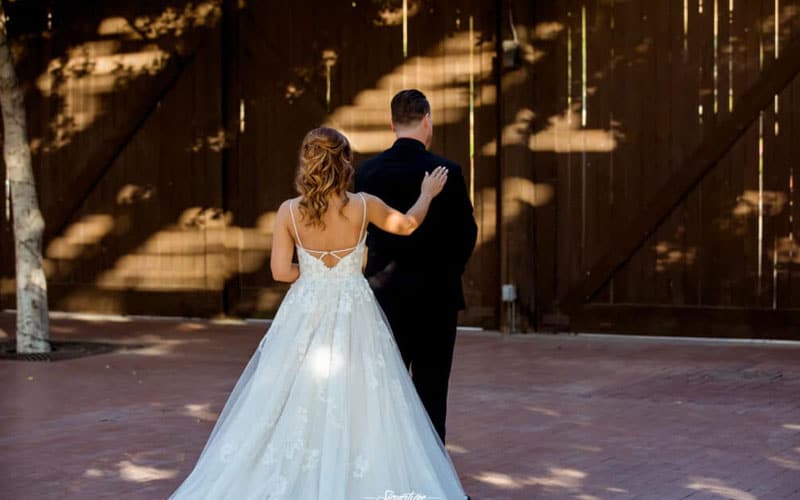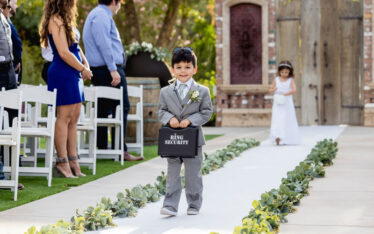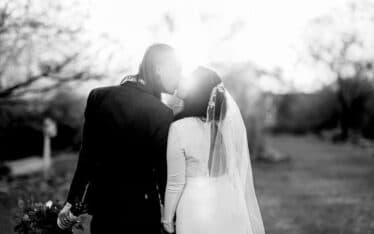Couples today follow all sorts of traditions, depending on their geographic, ethnic, and religious backgrounds. Most people, however, now have a modern approach to marriage. One of the biggest differences between modern and traditional weddings is that centuries ago most marriages were arranged. Families routinely arranged marriages for reasons other than the relatively new concepts of love and commitment.
Most people have heard of the age-old tradition that the groom should not see the bride on the day of the wedding. And, while many couples still honor it, most probably haven’t given much thought as to the origins of this custom.
So why shouldn’t the groom see the bride? Is there a purpose to this practice? Some will point to the superstition that it’s supposedly bad luck to view the bride in her wedding dress before meeting at the altar. Are there other pros and cons to observing this custom?
As an Arizona wedding photographer, I have experienced just about every tradition you can think of, but I thought it would be interesting to dig into this one a little further.
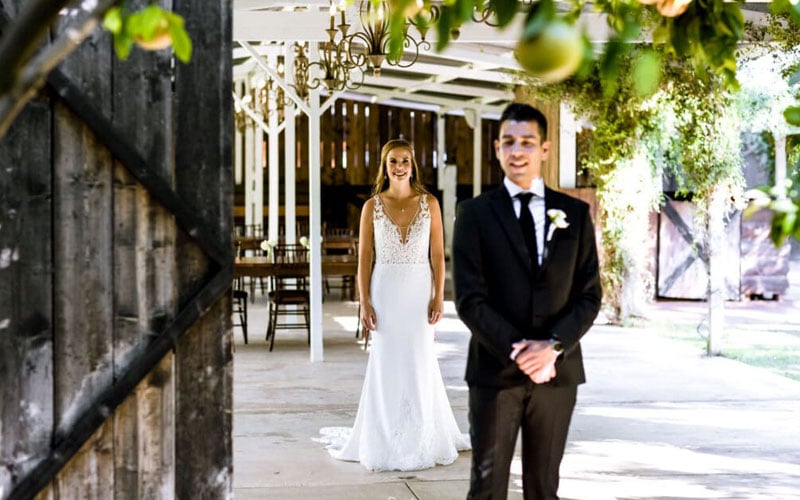
To look at the origins of this tradition, we have to go back centuries. Yes, centuries! In many parts of the world, the idea of marrying for love is a relatively new concept. Most marriages were arranged between families. While this may seem a bit strange by modern standards, at the time, those traditions and standard protocols made perfect sense. A marriage was a complicated and strategic affair between two families, with issues such as status, business, safety, and politics taking center stage.
When it came to this practice, the bride and groom were not even the main concern, nor were they given a voice in the matter. Sometimes marriages were arranged before the bride and groom were even born! In the case of marriages arranged to create political alliances or to broker peace, the families often didn’t live in the same town or village. Marrying someone you had never even met in a neighboring country or kingdom was not uncommon, especially for nobility.
When people hear the mention of arranged marriages, they may think of Asia and the Middle East. While it’s true that arranged marriages were (and, in some cases, still are) common in India, Japan, and many Islamic countries, they were also common throughout Europe until modern times.
In the arranged marriage scenario, a couple getting to know each other, or even seeing each other before the wedding was undesirable and even risky. No matter how advantageous the arrangement was to others, there was always the danger of the (unfortunate) possibility that one person didn’t find the other acceptable. As women had virtually no choice in these arrangements, the flight risk was most usually the groom. No one wanted to explain an absent groom to the bride’s father in that situation!
It was thought that preventing the couple from seeing one another before standing at the alter would prevent the awkward and potentially disastrous scenario of an uncooperative bride or groom. From the point of view of the families involved, no good could come out of it. If the couple truly liked or even grew to love each other, so much the better. But this was, at best, a secondary concern. The main goal was that the marriage ceremony take place and that the alliance be successful, no matter what.
As an interesting side note, this protocol for marriages was also responsible for the invention of the wedding veil. It was a handy accessory to prevent the groom from seeing his bride right up until the last moment when their union was sealed with a kiss. Too late to back out now!
Of course, now that we live in the age when arranged marriages are no longer the norm, couples are usually well acquainted long before the wedding. Hence, there’s no practical reason for the groom not to see the bride on the wedding day. Still, the practice has continued as a romantic custom and long-held tradition. This notion has been included in the daydreams of many young people when they imagine and look forward to their wedding day. Interestingly, like many common traditions and superstitions, the origins remain unknown to most people today.
Superstition
Over the years, with arranged marriages no longer being common, the reasons for not seeing the bride have become more about the supposed bad luck attached to seeing the dress even more so than the bride herself. The tradition is commonly upheld in modern weddings as it is part of the experience as well as part of the excitement and anticipation before the big day. Many brides keep their dress a secret from their future husband choosing to surprise him on their wedding day. A lot of the grooms I have serviced prefer waiting to see their loved one until they are walking down the aisle.
Interestingly, although there is no real evidence of bad luck being caused by seeing the bride, over half of soon-to-be-married couples stated that they plan to uphold the tradition.
Modern Twist
In a modern twist on the traditional custom, some couples opt to have a private “first look” prior to the actual ceremony time. This option preserves some of the suspense and intrigue of not seeing each other prior to the walk down the aisle. Not only does a first look get some of the jitters out of the way prior to having an audience, it can be a beautiful and intimate moment for the couple. As a photographer, I can attest to this being an opportunity for some beautiful candid photos. It may also be beneficial for some of the couple’s photos be taken care of at this time as well. In addition, some couples appreciate having a moment between seeing their intended for the first time and the actual ceremony to have the opportunity to freshen up after what can be a very emotional experience.
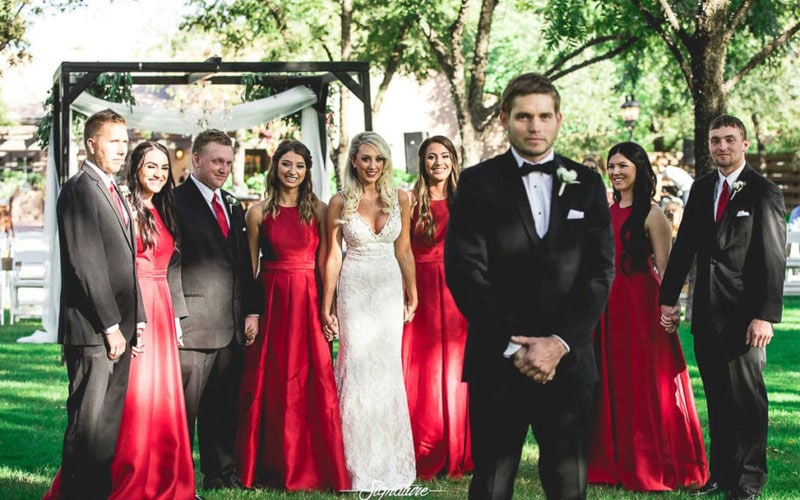
Now that you know the origin of this tradition, does it still make sense to follow it? That’s really a personal decision. Whatever you decide, it’s important to discuss it beforehand so the bride, groom, and others participating in the wedding are all on the same page. You don’t want to have a miscommunication, where one party thinks it’s important to adhere to the rule while the other thinks it’s not a big deal. For some people, it’s easier to just stick with the tradition simply because it’s the expectation and therefore the path of least resistance. Even if the couple isn’t convinced it matters, they may have family members who will tell them it’s bad luck or may find other meaning in preserving the custom.
So let’s discuss! What do you prefer? Will you enter your venue hand in hand? Would you rather do the first look or traditionally wait until the bride walks down the aisle? I don’t think there’s a wrong answer, just personal preferences!
Whatever your decision is regarding if or how to see one another on the big day, one thing is for certain, that first moment will be one of the best moments.
